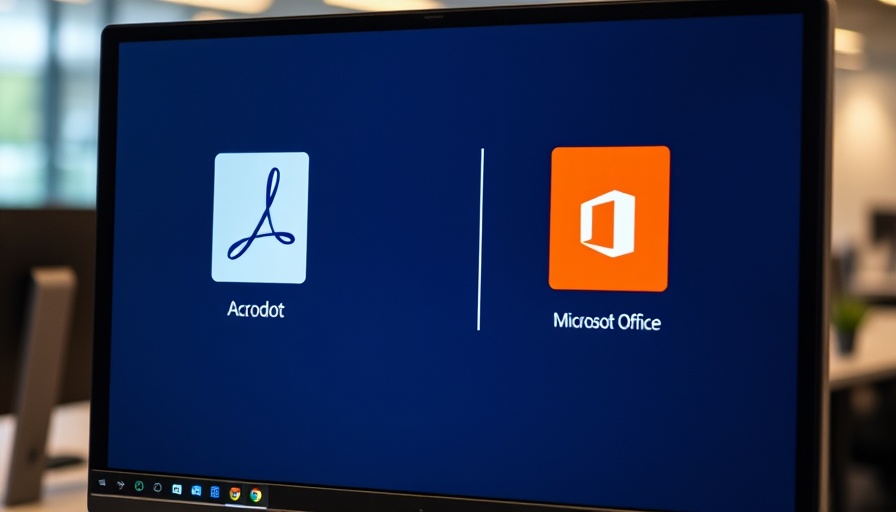
Unlock Essential Tools: Why Adobe Acrobat and Microsoft Office Matter
In an era where digital documents are the cornerstone of business operations, owning the right tools can significantly impact productivity. Adobe Acrobat and Microsoft Office stand out as crucial software for anyone who navigates the world of professional documents, reports, and presentations. For just $90, this powerful bundle offers users the opportunity to master their workflow, harness collaboration and streamline their tasks like never before.
Benefits of Mastering Microsoft Office
Microsoft Office has long been a staple in office settings, bringing documents, spreadsheets, and presentations to life. Its familiar interface and robust features like Word, Excel, and PowerPoint empower users to create, edit, and visually engage audiences. By understanding these tools, professionals can enhance communication, analyze data effectively, and deliver impactful presentations. For teams leveraging Agile methodologies or experimenting with DevOps, these applications enable endless modifications and collaborations while maintaining precision.
The Power of Adobe Acrobat
Adobe Acrobat amplifies this productivity by allowing users to create and edit PDF documents seamlessly. From encryption to form creation, Acrobat empowers businesses to maintain security and professionalism in document presentation. Moreover, for Agile development teams that require constant shifts in testing documentation and project briefs, Acrobat's features can consolidate informational clarity and streamline communication among different roles, from project managers to testing teams.
Real-World Application: A Case Study
Consider a software development company adopting Agile principles. They used Microsoft Office to manage project timelines via Excel and presented project updates through PowerPoint, ensuring stakeholders were engaged and informed. Meanwhile, they utilized Adobe Acrobat for sharing their project documents, ensuring everyone had access to standardized information. This synergy enhanced team productivity and transformed the way information was communicated within and outside the organization.
Future Trends: The Integration of Tools
As businesses increasingly adopt Agile DevOps practices, the need for seamless integration of tools such as Microsoft Office and Adobe Acrobat is crucial. Future trends hint at more sophisticated integrations between these platforms, allowing for streamlined workflows that connect project management tools and documentation processes. Such integration promises to elevate collaboration further, providing teams with the ability to change documents instantly and share feedback in real time—an essential factor for maintaining pace in fast-moving environments.
Bridging Gaps Between Roles
Executives, project managers, and team members can all benefit from owning Adobe Acrobat and Microsoft Office, collapsing previous boundaries in document handling and communication. This toolkit empowers all roles to actively participate in a unified goal of successful delivery and excellence in their outputs. Ultimately, possessing these tools creates a connected, efficient workspace promoting alignment among developers, product owners, and scrum masters.
Why Invest Now?
The recent availability of this $90 bundle cannot be overlooked as organizations navigate new challenges in documentation and collaboration amidst a rapidly changing landscape. Investing in these tools contributes not just to immediate productivity, but also fosters a culture of learning and adaptability, key drivers in today’s Agile and DevOps environments. Don't miss the opportunity to enhance your workspace and elevate your team's capabilities through innovation.
 Add Row
Add Row  Add
Add 




Write A Comment